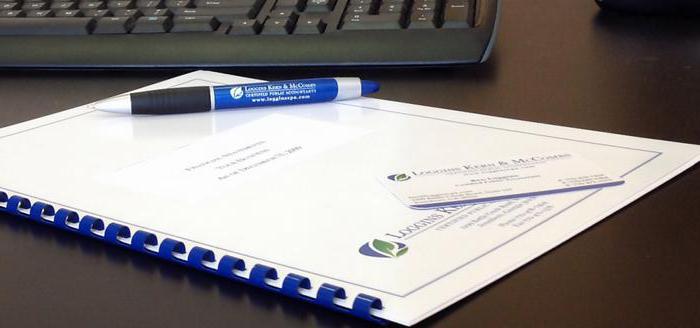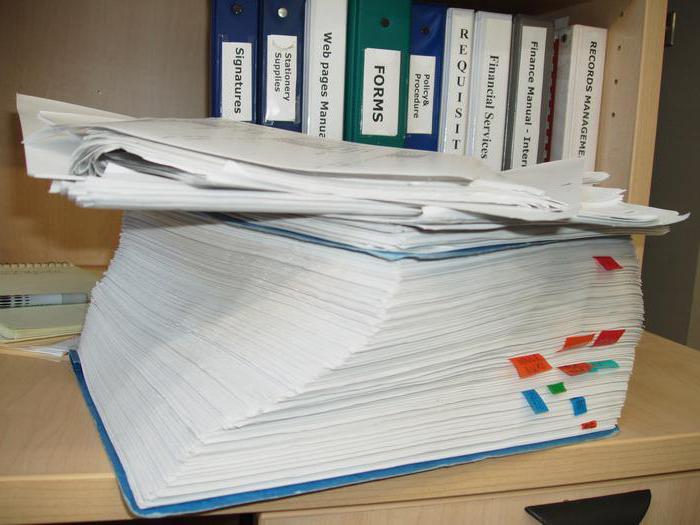Accounting (financial) statements of enterprises is a set of accounting data expressed in a system of certain indicators. It is used in assessing the property status of obligations, business transactions and results economic activity company. Let us further consider what constitutes enterprise reporting. 
General information
Instructions for the preparation and reporting forms of the enterprise are approved by the Ministry of Finance and Goskomstat of the Russian Federation. Unified indicators allow us to structure information on economic regions, industries, territories and the entire national economic sector as a whole. The bodies that regulate accounting, within their competence, approve guidelines for compiling documentation for banking, insurance and other companies in accordance with regulations of the Ministry of Finance.
Structure
Today, organizations must provide annual and interim reporting. The latter includes:
- Balance (f.№1).
- Profit and loss statement (f№2).
In addition to them, other documentation (on the movement of funds, etc.) and an explanatory note may also be submitted. The annual financial statements of the enterprise include:
- Balance.
- Statement of cash flows (f. No. 4).
- Profit and loss documentation.
- Report on changes in the amount of capital (f. No. 3).
- Appendix to the balance sheet (f. No. 5).
- The final part of the conclusion of the audit.
- Specialized forms approved by departments and ministries of the Russian Federation in agreement with the Ministry of Finance.

Explanatory note
It may provide an assessment of company performance. The criteria are:
- The breadth of product sales markets, including the availability of export supplies.
- Reputation of the company. It can be expressed in the popularity of the company among customers who use its services, and so on.
- The degree of support for the given pace of development, the level of implementation of the plan.
- The indicator of the effectiveness of the use of available resources, etc.
It is advisable to include in the note information on the dynamics of the most important economic results of the enterprise for several years, a description of upcoming investments, measures taken and other information that could interest users who are provided with the financial statements of the enterprise. 
Important point
The reporting of small enterprises that do not use a simplified taxation system and are not required to perform an audit may not include information on changes in capital and movement of monetary assets, an appendix to the balance sheet and an explanatory note. If the indicated companies are charged with the need to carry out control measures, they may also not provide f. No. 3, 4,5 in the absence of relevant information.
Non-profit companies have the right not to include information on the movement of funds in the financial statements of the enterprise (f.4), as well as in the absence of information and an appendix to the balance sheet (f. No. 5). Associations (public organizations) that do not carry out entrepreneurial activity and do not have a turnaround in the implementation of works, services, goods, with the exception of retired property, do not compile intermediate documentation. These organizations do not provide information on the movement of cash assets and changes in capital, an explanatory note and annexes as part of the annual report.
Loss and profit data
The financial statements of the company include a comparison of the amount total income from the sale of services, goods or works, or other items and receipts with an indicator of all costs that the company incurred to maintain its activities from the beginning of the year. The balance sheet result will be (gross profit or losses for the specified period. 
Analysis of financial statements of the enterprise
The results of the assessment of the company's business operations for investors and other interested parties are of great importance. This documentation is more important than even the balance of the company. This value is caused by the fact that the analysis of the enterprise’s reporting does not contain instantaneous, but dynamic information about the successes that were achieved over a certain period, due to what factors it happened, what are the scale of its activities. The documentation gives an idea of the development trends of the business entity, its capabilities not only in the past and present, but also in future periods.
The financial statements of the enterprise: profit and loss
The indicator on the cost of sales of products, provision of services / performance of work contains information on the amount of production costs without the value reflected in management expenses. The article on sales proceeds minus VAT, excise taxes and other similar liabilities reflects data on sales proceeds, minus the indicated payments. The reporting company contains information on business expenses. This article indicates the costs that are recorded in the invoice. 43 and relate to the sale of products / services / work. Management expenses include amounts recorded in the account. 46 ("General business expenses") in accordance with the established procedure. Also, this article reflects the values debited from this account when determining the financial results directly for DB SCH. 46.  Percentage receivable and payable include amounts due to the company in the form of dividends / payable on deposits, bonds and so on. When investing in securities of other companies, the profit earned on shares is shown in the article on income from participation in other companies. The reporting company reflects information about other operating income and expenses. They include data on the results of events that were not reflected in previous articles f. No. 2.
Percentage receivable and payable include amounts due to the company in the form of dividends / payable on deposits, bonds and so on. When investing in securities of other companies, the profit earned on shares is shown in the article on income from participation in other companies. The reporting company reflects information about other operating income and expenses. They include data on the results of events that were not reflected in previous articles f. No. 2.
"Other non-operating income" records information on accounts payable and deposits with an expired statute of limitations. This article also includes the amounts received to pay off receivables that were written off in previous periods as a loss (as uncollectible to receive). Other non-operating income also include fines recognized, awarded or awarded to the debtor, fines, penalties and other sanctions for violation of the terms of contracts. In the article on income tax, the corresponding amount is recorded in accounting, accrued in accordance with the provisions of the law and to be sent to the budget. 
Capital turnover
This report includes two sections. The first - "Equity" - contains information about:
- Additional, statutory, reserve capital.
- Social funds and accumulation funds formed in accordance with the adopted policies and constituent documents.
- Trust funds.
- Retained earnings previous years.
Each indicator has 4 columns:
- Balance at the beginning of the year (credit balance on accounts).
- Revenues in the reporting period (credit turnover).
- Used (spent) funds (debit transactions).
- Balance by the end of the year.
A change in the authorized capital in the direction of reduction is allowed upon withdrawal by participants of their deposits, cancellation of shares owned directly by the joint-stock company, reduction of the nominal value of securities upon bringing its value to the size of net assets.The second section includes information on the availability and movement of consumer funds, reserves for future costs and payments, as well as estimated reserves.
Money movement
This report should be presented in rubles. If there is a movement of foreign currency, a calculation is made for each type, after which it is converted into national money at the Central Bank rate on the date of filling out the documentation. The transfer of funds is compiled in the context of the investment, current and financial activities of the company. 
application
The section on the movement of borrowed funds contains the presence and movement of assets taken as bank or other loans. The lines “not repaid on time” record overdue and deferred obligations. The section on accounts payable and receivable indicates the status and movement of the relevant funds, which are recorded in the accounts for settlements. They also include promissory notes and advances. The section on depreciable property contains a breakdown of intangible assets, rapidly wearing and low-value items, and fixed assets that belong to the company.
Indicators of the movement of financing, investments and long-term investments reflect the availability of attracted and own resources, their use for capital and other purposes. The section on costs incurred by the company contains information on the costs of their elements, which are recorded in accordance with the requirements. The breakdown of individual losses and profits reflects funds received during the reporting and previous periods and included in the relevant articles.








